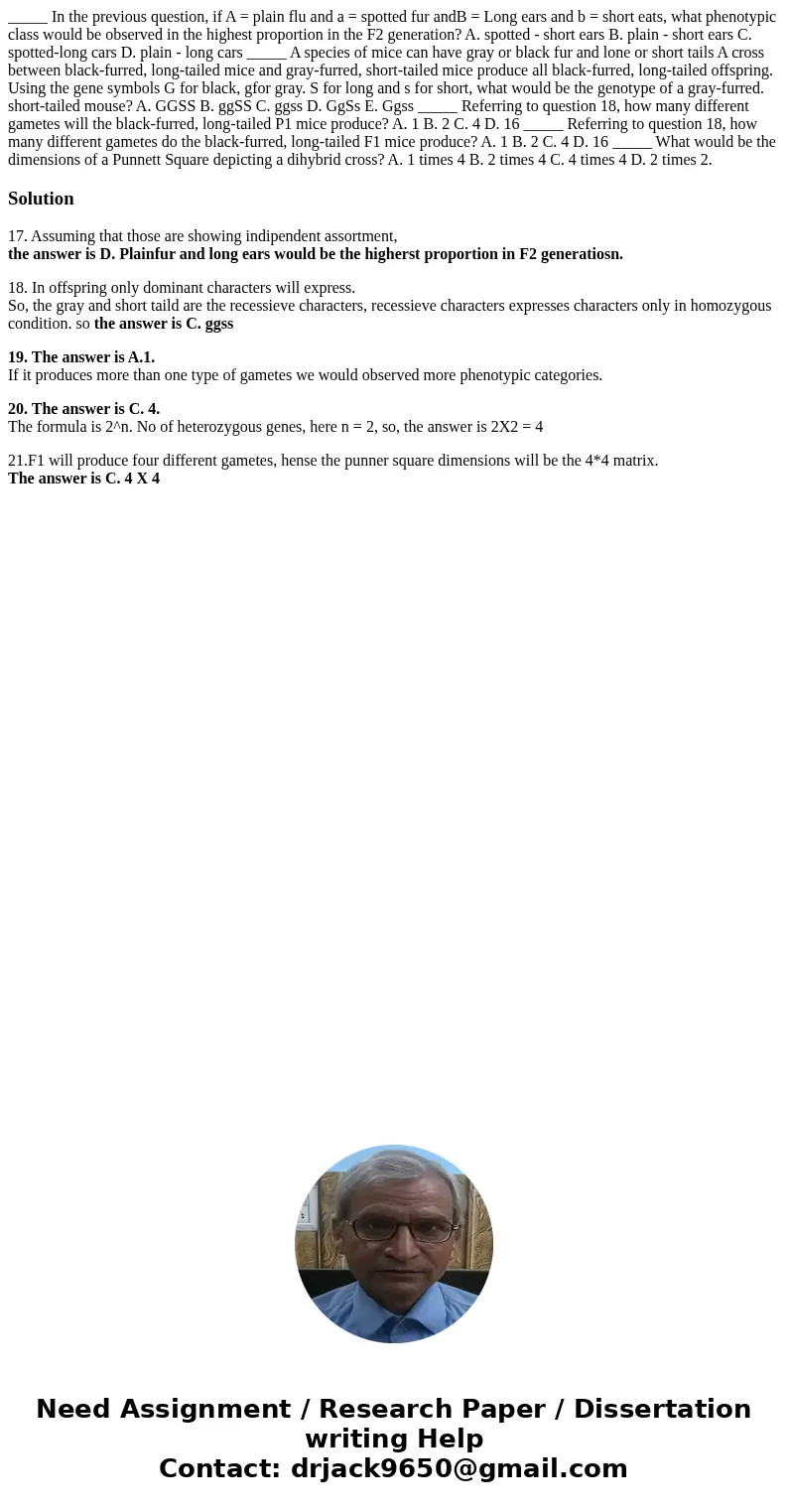In the previous question if A plain flu and a spotted fur
_____ In the previous question, if A = plain flu and a = spotted fur andB = Long ears and b = short eats, what phenotypic class would be observed in the highest proportion in the F2 generation? A. spotted - short ears B. plain - short ears C. spotted-long cars D. plain - long cars _____ A species of mice can have gray or black fur and lone or short tails A cross between black-furred, long-tailed mice and gray-furred, short-tailed mice produce all black-furred, long-tailed offspring. Using the gene symbols G for black, gfor gray. S for long and s for short, what would be the genotype of a gray-furred. short-tailed mouse? A. GGSS B. ggSS C. ggss D. GgSs E. Ggss _____ Referring to question 18, how many different gametes will the black-furred, long-tailed P1 mice produce? A. 1 B. 2 C. 4 D. 16 _____ Referring to question 18, how many different gametes do the black-furred, long-tailed F1 mice produce? A. 1 B. 2 C. 4 D. 16 _____ What would be the dimensions of a Punnett Square depicting a dihybrid cross? A. 1 times 4 B. 2 times 4 C. 4 times 4 D. 2 times 2.
Solution
17. Assuming that those are showing indipendent assortment,
the answer is D. Plainfur and long ears would be the higherst proportion in F2 generatiosn.
18. In offspring only dominant characters will express.
So, the gray and short taild are the recessieve characters, recessieve characters expresses characters only in homozygous condition. so the answer is C. ggss
19. The answer is A.1.
If it produces more than one type of gametes we would observed more phenotypic categories.
20. The answer is C. 4.
The formula is 2^n. No of heterozygous genes, here n = 2, so, the answer is 2X2 = 4
21.F1 will produce four different gametes, hense the punner square dimensions will be the 4*4 matrix.
The answer is C. 4 X 4

 Homework Sourse
Homework Sourse